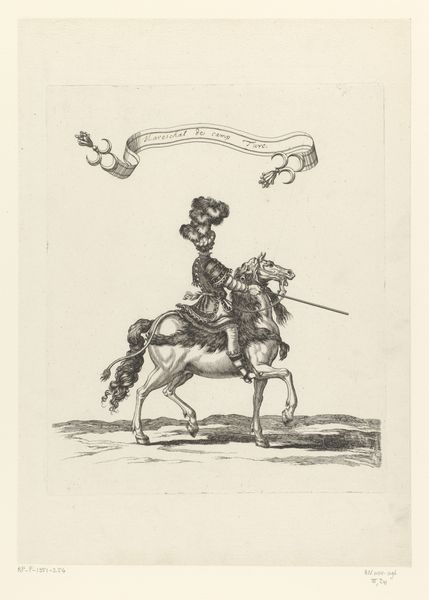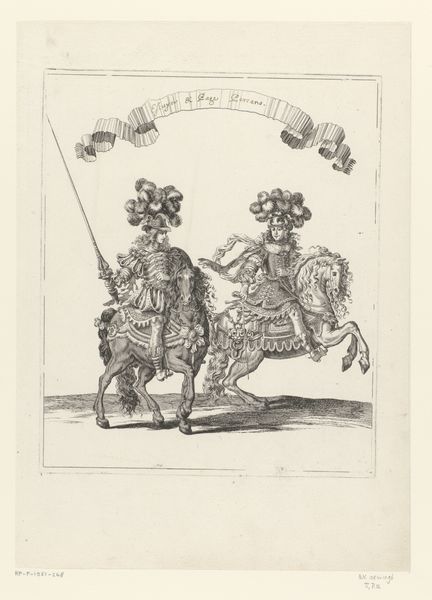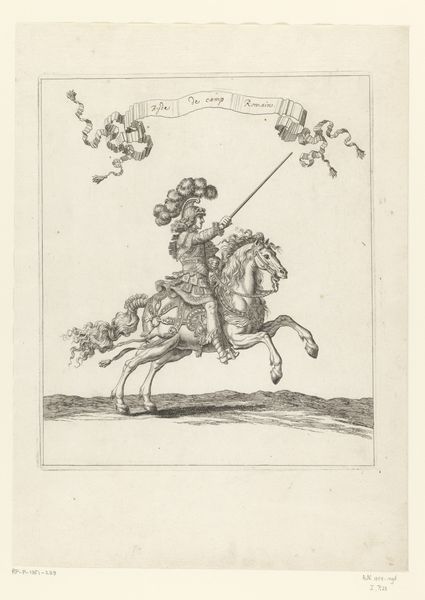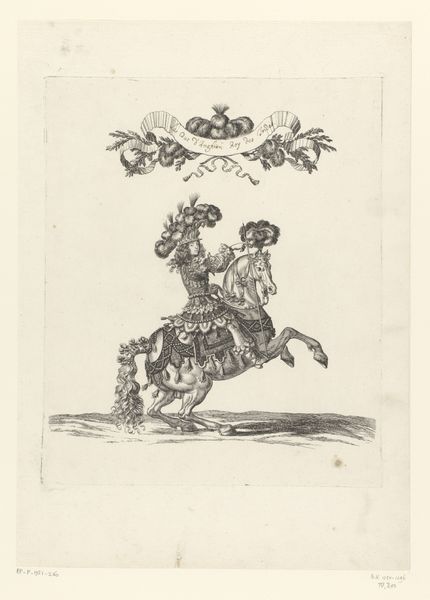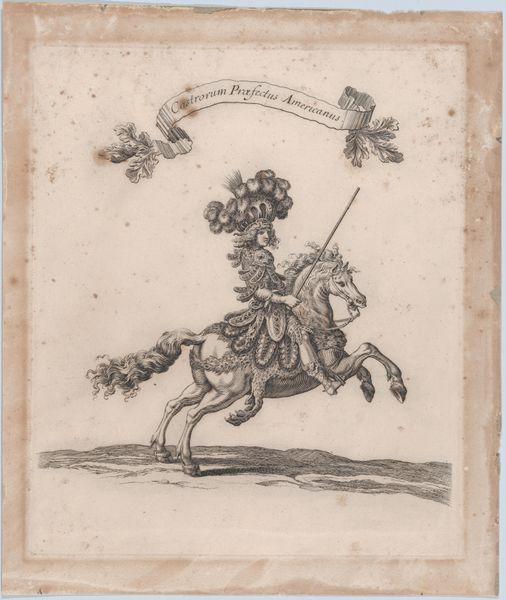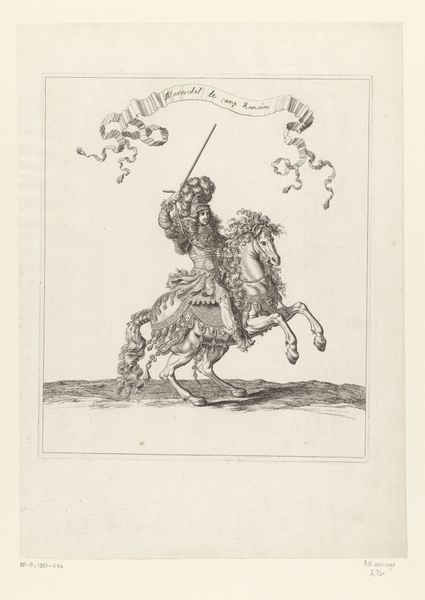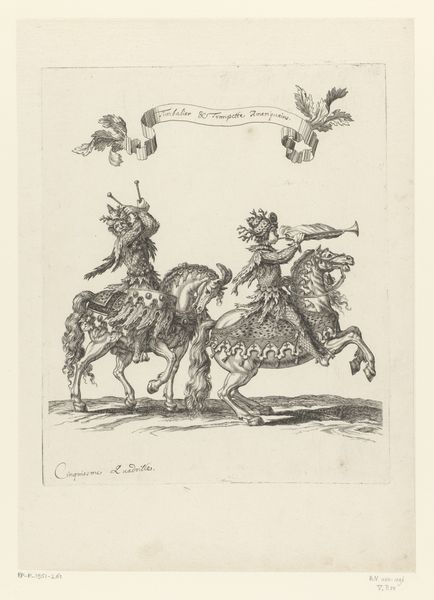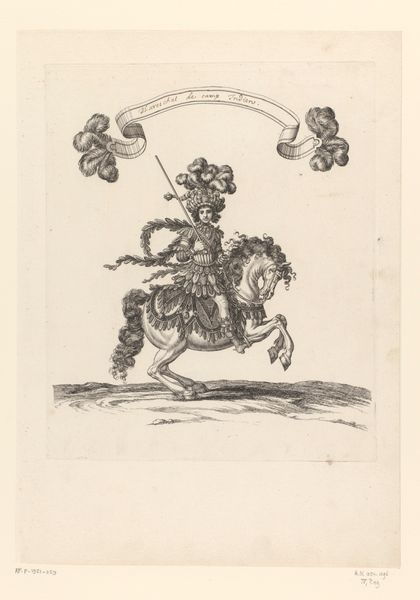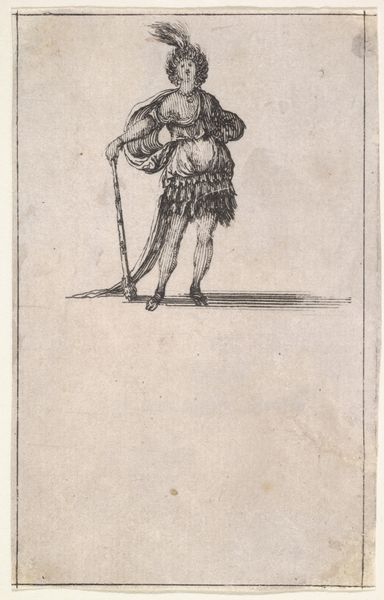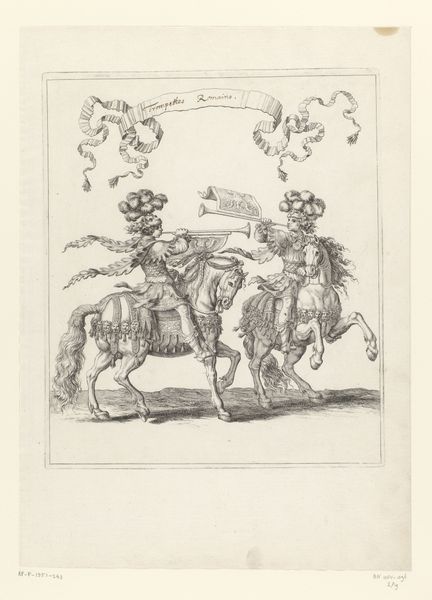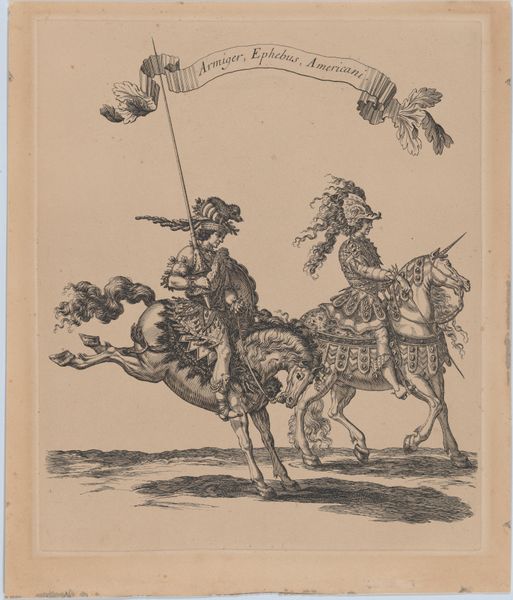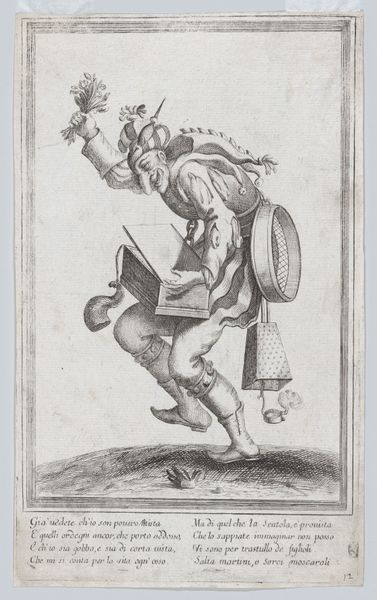
engraving
#
portrait
#
baroque
#
pen sketch
#
old engraving style
#
figuration
#
horse
#
line
#
history-painting
#
engraving
Dimensions: height 312 mm, width 260 mm
Copyright: Rijks Museum: Open Domain
François Chauveau created this etching of a leader on horseback in Persian costume in the Netherlands during the seventeenth century. But why this interest in the ‘orient’? During this period in Europe, there was a fashion for all things Persian. Royal courts often dressed in the Persian style, referencing the exoticism and wealth of what they considered the ‘mysterious’ East. However, this interest was shaped by Europe’s own imperialistic ambitions. By the seventeenth century, the Dutch East India Company had already established itself as a major colonial power in the East Indies. Prints like this played a role in creating a sense of cultural superiority. The image is inscribed with a text that translates as 'Marshal of the camp Romans'. We might ask what this curious connection between Persia and Rome tells us about the construction of European identity in this period. To find out more, we can look at fashion history, travel writing, and colonial archives to understand the social and institutional context of the print.
Comments
No comments
Be the first to comment and join the conversation on the ultimate creative platform.
